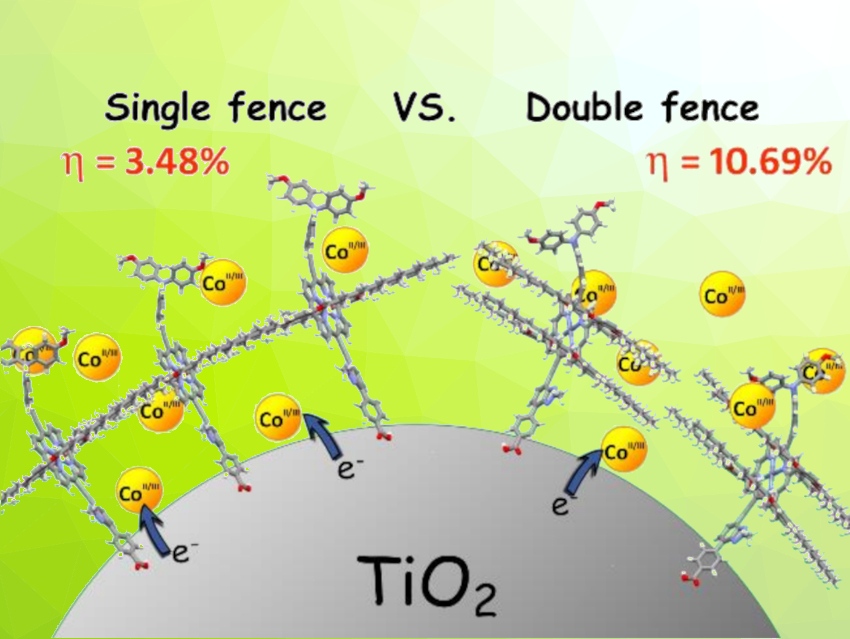Dye-sensitized solar cells (DSSCs) can convert solar energy to electricity. Compared to silicon‐based solar cells, DSSCs have several advantages, e.g., low production cost, environmental friendliness, high efficiency under dim light, and high flexibility. The most efficient DSSCs are based on cobalt electrolytes in combination with porphyrins or organic dyes as sensitizers. However, one drawback of cobalt electrolytes is fast charge recombination of Co3+ with the electrons in the TiO2 substrate, reducing the photovoltage and power conversion efficiency (PCE) of devices. Tuning the properties of the sensitizers on the TiO2 surface could help to solve this problem.
Chen-Yu Yeh, National Chung Hsing University, Taichung City, Taiwan, Tzu-Chien Wei, National Tsing-Hua University, Hsinchu City, Taiwan, and colleagues have developed so-called “double fence” porphyrins (pictured on the right) by introducing long alkoxy chains to the ortho-positions of four phenyl groups situated at β-positions of the porphyrin ring. Key steps in the synthesis are the introduction of a phenyl group to the β-position of pyrrole by Suzuki coupling, followed by condensation and decarboxylation to give dipyrrylmethane, which was then condensed with 3-(triisopropylsilyl)propynal to create the double fence porphyrin core.
The double fence porphyrins reduce molecular aggregation and impede charge recombination, leading to higher PCEs. The double fence porphyrin dyes provide a higher PCE (up to 10.69 %) than single fence analogues (3.48 %) or the benchmark dye YD2-o-C8 (9.83 %) under similar conditions.
- Double Fence Porphyrins that are Compatible with CoII/III Electrolyte for High Efficiency Dye-Sensitized Solar Cells,
Ching-Chin Chen, Jia-Sian Chen, Vinh Son Nguyen, Tzu-Chien Wei, Chen-Yu Yeh,
Angew. Chem. Int. Ed. 2020.
https://doi.org/10.1002/anie.202013964


